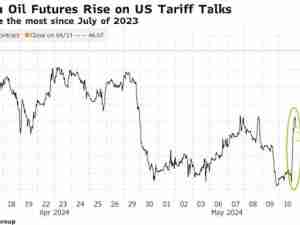Export-happy Brazil may have created a corn shortage for livestock - Braun
By: Reuters | Jan 22 2016 at 08:00 AM | International Trade
CHICAGO - A rush to export a record Brazilian corn crop may send domestic prices higher over the next few months which could ultimately drive up poultry prices internationally.
Brazil exported over 11 million tonnes of corn in the last two months of 2015, according to Williams Shipping Agency, more than doubling the volume observed during the same period in 2014. Almost 1 million tonnes of this increase was devoted to North Africa following disappointing Ukrainian and European corn harvests.
Corn cash prices in the interior of Brazil have skyrocketed this month, leading many to sense the anticipation a domestic shortage. Meanwhile, port prices FOB remain at the relatively lower levels of late. (http://tmsnrt.rs/1KtRGgS)
It is not hard to understand the eagerness of Brazilian farmers to aggressively ship their supply overseas while the real is tumbling, especially coming off a record corn crop.
But domestic grain supply is crucial for feed in Brazil’s massive livestock industry and JBS SA, the world’s largest meat packer.
Brazil is currently the world’s leading poultry supplier, second in beef and third in pork, according to the U.S. Department of Agriculture.
With another off-the-charts volume of corn scheduled to leave Brazilian ports in January, livestock farmers may be left scrambling to secure enough grain for their animals, and this could send waves through the global markets.
THE HUNGRIEST? CHICKENS
As the world’s biggest poultry exporter, a spike in domestic corn prices would surely ripple through the international market.
Poultry producers are more vulnerable to price shocks than cattle or pork exporters because chickens go from egg to market ready in about four to six weeks and corn is a big component of their diet unlike Brazil’s grass-fed cattle.
Most poultry is produced in southern Brazil but that region produces mainly full-season corn, which only accounts for one-third of Brazilian production. So if local corn supply is particularly tight, they would increasingly have to rely on Central Brazil’s safrinha corn crop, which is not harvested until at least June. The hog industry would encounter the same problem as it is also concentrated in the south.
Frozen chicken spots are already at five-year highs in Paraná, the leading Brazilian state in poultry production. This trend is generally true elsewhere in the country, though other locations have seen a marked decline in recent weeks.
Higher corn prices would likely only affect pork producers if prolonged as hogs take six to eight months to reach market weight. While corn makes up the majority of a typical hog’s diet, other feeds can be substituted. And unlike Brazil’s 36 percent share of the global poultry market, the South American country accounts for only 8 percent of the world’s pork exports.
Brazil’s beef industry is unlikely to be affected by a potential corn shortage. Although farmers have been increasingly feeding grain to their herds in order to increase the efficiency, the vast majority of Brazil’s cattle are grass-fed.
Additionally, cattle generally require a minimum of 15 months from birth before reaching market weight, but this process can take two or more years. Because of this slow turnover time and the feeding habits, only a prolonged corn deficit would begin to make a dent in the market.
IMPACTS AND SOLUTIONS
If Brazilian poultry becomes considerably more expensive, Middle Eastern and Asian consumers would be the most affected. Saudi Arabia imports the biggest share of Brazilian poultry at 20 percent, and Japan and China also combine for 20 percent. Together, United Arab Emirates, South Africa, and the European Union round out another 20 percent.
Higher Brazilian prices could shift buyers to the U.S. supply, which places a close second behind Brazil with 30 percent of world poultry trade.
In terms of securing corn for feed, Brazil could be looking to its neighbors, Argentina and Paraguay. The recent Argentine policy changes lifting corn export quotas and banishing the export tax surely support this, but with stocks dwindling to four-year lows (seven years for Paraguay), the tightening of South American supply could end up straining the pockets of Brazilian livestock farmers anyway.
Poultry producers might look to soybean meal more than they are used to doing, though soymeal prices have also bumped in recent weeks, so it still could mean an extra burden for producers. Soybeans will start arriving at the ports for export fairly soon, so if producers are looking for any soybeans, they ought to act fast before they too disappear out of the country.








